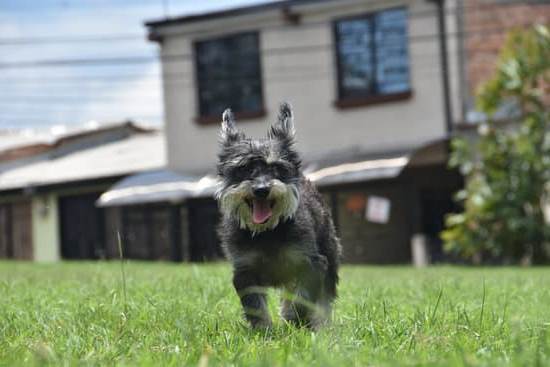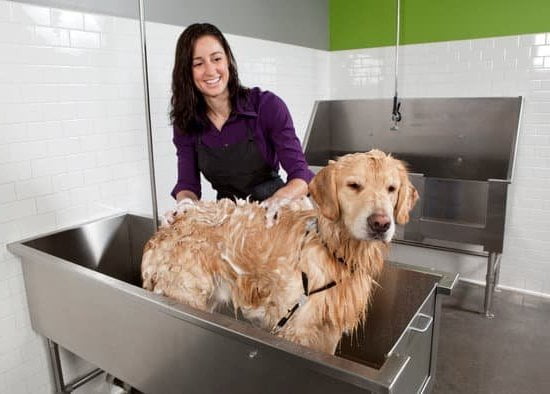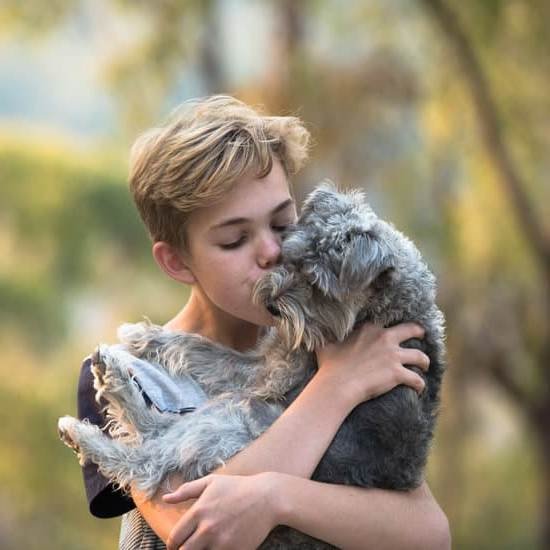Having a therapy dog can be a rewarding experience for both the owner and the community. These specially trained dogs provide comfort, support, and companionship to individuals in various settings such as hospitals, nursing homes, schools, and disaster areas. If you’re wondering how to get your dog trained to be a therapy dog, there are several key steps to consider.
First and foremost, understanding the role of a therapy dog is essential. Unlike service dogs that have specific tasks related to a disability, therapy dogs offer emotional support and promote healing through their presence and interactions with people. They must be well-behaved, sociable, and able to handle different environments and situations with ease.
Choosing the right breed for therapy work is also crucial. While any breed can potentially become a therapy dog, certain characteristics like calm temperament, friendliness, and adaptability are desirable traits. Basic obedience training is the foundation for therapy work, teaching commands like sit, stay, come, and walking on a leash politely. Advanced training techniques focus on skills such as ignoring distractions, staying calm in noisy environments, and following cues from handlers during interactions.
Understanding the Role of a Therapy Dog
Therapy dogs play a crucial role in providing emotional support, comfort, and companionship to individuals in various settings such as hospitals, nursing homes, schools, and disaster areas. Their presence can help reduce stress, anxiety, and feelings of loneliness for those they interact with.
These specially trained dogs can make a positive impact on the mental and emotional well-being of people in need. Understanding the role of a therapy dog is essential for owners who are interested in getting their dogs trained for this purpose.
Building Trust and Connection
One of the key aspects of a therapy dog’s role is to build trust and connection with the individuals they are interacting with. These dogs are taught to be gentle, calm, and affectionate in their interactions, making them well-suited for providing comfort to people in distress. Training your dog to be responsive to different emotions and cues from others is crucial in preparing them for their role as a therapy dog.
Setting Boundaries and Expectations
It is important for owners to understand that therapy dogs have specific boundaries and expectations when performing their duties. They should be able to remain focused on their tasks even in potentially distracting environments. Teaching your dog impulse control and obedience skills will help them navigate different situations effectively while providing support to those in need.
Emotional Support Training
In addition to basic obedience training, therapy dogs also require emotional support training to prepare them for the challenges they may encounter during their work. This type of training focuses on helping dogs remain calm under pressure, handle unexpected situations gracefully, and respond appropriately to various behaviors exhibited by the individuals they are interacting with.
Learning how to read your dog’s body language and signals is essential in gauging their comfort level and ensuring they are prepared for the demands of therapy work.
Finding the Right Breed for Therapy Work
When considering training your dog to become a therapy dog, one of the crucial aspects to take into account is finding the right breed for therapy work. While any breed can potentially be trained as a therapy dog, some breeds are naturally more inclined towards the traits required for this type of work.
Characteristics to Look for in Therapy Dog Breeds
When choosing a breed for therapy work, it is essential to consider characteristics such as temperament, size, energy level, and trainability. Breeds known for being calm, friendly, sociable, and gentle are often preferred for therapy work. Additionally, smaller breeds that are easy to handle and less intimidating to people can also be beneficial in certain therapy settings.
Popular Breeds for Therapy Work
Some breeds that are commonly chosen for therapy work include Labrador Retrievers, Golden Retrievers, Poodles, Cavalier King Charles Spaniels, and Beagles. These breeds are known for their friendly and gentle nature, making them well-suited for interacting with different people in various environments. It is important to note that while certain breeds may have characteristics that make them ideal for therapy work, individual temperament and training play a significant role in determining a dog’s suitability as a therapy dog.
Considerations When Selecting a Breed
While breed characteristics can give you an idea of potential suitability for therapy work, it is essential to remember that each dog is unique and may have different needs and abilities. Before making a decision on which breed to choose for training as a therapy dog, it is recommended to spend time with various breeds and individual dogs to get a better understanding of their personality traits and how they may fit into the role of a therapy dog.
Ultimately, selecting the right breed involves considering both breed-specific traits and individual qualities of the dog being trained.
Basic Obedience Training for Therapy Dogs
When preparing your dog to become a therapy dog, basic obedience training is essential. This training lays the foundation for more advanced skills needed in therapy work. Basic obedience commands such as sit, stay, come, and leave it are crucial for a therapy dog to behave appropriately in various settings. Positive reinforcement methods, using treats or praise, are effective ways to teach these commands and motivate your dog during training sessions.
Consistency is key when training your dog for therapy work. Establish a regular training schedule and practice obedience commands daily to reinforce good behavior. Additionally, socializing your dog with other animals and people in different environments will help them become comfortable and confident in various situations they may encounter as a therapy dog. Remember that each dog learns at its own pace, so be patient and understanding throughout the training process.
It is important to keep in mind that not all dogs are suited for therapy work due to their temperament or behavior issues. If you encounter challenges during basic obedience training and feel unsure about your dog’s suitability for therapy work, consult with a professional trainer or veterinarian for guidance. They can provide expert advice on how to address specific behavior issues and determine if your dog has the potential to become a successful therapy dog.
| Benefits of Basic Obedience Training | Understanding the Role of Therapy Dog |
|---|---|
| Establishes foundation for advanced skills | Provides comfort and support to individuals |
| Promotes positive behaviors in various settings | Assists in emotional healing and stress relief |
| Bolsters communication between handler and dog | Enhances overall well-being and quality of life |
Advanced Training Techniques for Therapy Dogs
When it comes to training a therapy dog, advanced techniques are essential to ensure they are well-prepared for their important role. Here are some effective methods to take your dog’s training to the next level:
- Consistent Exposure: Exposing your dog to a variety of environments, sounds, and stimuli is crucial for their training. This helps them become more adaptable and confident in different situations they may encounter during therapy work.
- Complex Commands: Teaching your dog more complex commands beyond basic obedience can be beneficial. Commands like “leave it,” “stay,” and “heel” can help your dog navigate challenging situations during therapy sessions with ease.
- Desensitization: Desensitizing your dog to triggers or distractions they may encounter during therapy work is vital. Gradually introducing them to loud noises, crowded spaces, or other animals can help them remain calm and focused during their interactions as a therapy dog.
In addition to these techniques, positive reinforcement through treats, praise, and playtime is key in reinforcing good behavior in therapy dogs. Consistency in training and patience are also essential as you work towards preparing your dog for their role as a therapy companion.
Remember that every dog learns at their own pace, so it’s important to tailor your training approach based on your dog’s individual needs and abilities. By implementing these advanced training techniques, you can further enhance your dog’s skills and readiness for becoming a certified therapy dog.
Now let’s dive into the certification and registration process that will officially recognize your furry friend as a therapy dog.
Certification and Registration Process for Therapy Dogs
When considering getting your dog trained to be a therapy dog, one of the pivotal steps in the process is understanding the certification and registration process. This step is crucial, as it ensures that your dog meets certain standards and requirements to safely participate in therapy work. Below are some key points to consider when going through the certification and registration process:
- Research different therapy dog organizations: There are several organizations that offer certification and registration for therapy dogs. Take the time to research and find a reputable organization that aligns with your goals and values.
- Meet the eligibility criteria: Each organization may have specific criteria that your dog must meet in order to become certified. This may include age requirements, health evaluations, temperament assessments, and obedience training.
- Complete an evaluation or test: Once you have identified an organization, you will need to schedule an evaluation or test for your dog. This may involve observing how your dog interacts with people, responds to different environments, and follows commands.
It’s important to remember that the certification and registration process for therapy dogs can vary depending on the organization you choose. Be sure to thoroughly review their guidelines and requirements to ensure a smooth transition into therapy work. By following these steps, you can help set your dog up for success in becoming a certified therapy dog.
Tips for Socializing Your Dog for Therapy Work
One of the key elements in preparing your dog to become a therapy dog is socialization. Socializing your dog effectively will help them feel more comfortable and confident in various situations, which is crucial for their work as a therapy animal. To start, expose your dog to different environments, people, and animals to help them become more adaptable and less anxious in unfamiliar settings. This can include visits to parks, pet-friendly stores, and even supervised interactions with other dogs.
Another important aspect of socializing your dog for therapy work is exposing them to various sounds and stimuli they may encounter during their visits. This can include loud noises, different types of flooring (e.g. tile, grass), and equipment commonly found in medical or therapeutic settings. By familiarizing your dog with these elements early on, you can help reduce their stress levels during therapy sessions and improve their overall performance.
In addition to environmental socialization, it’s essential to introduce your dog to different people of all ages, genders, and ethnicities. This will help your dog feel at ease around a diverse range of individuals they may come across during their therapy work.
Encourage positive interactions with strangers by rewarding good behavior with treats or praise. Consistent socialization efforts will not only benefit your dog’s development but also enhance their effectiveness as a therapy animal in providing comfort and support to those in need.
| Benefits of Socializing Your Dog for Therapy Work | Importance |
|---|---|
| Increased adaptability and confidence | Helps dogs feel comfortable in unfamiliar settings |
| Reduced stress levels during therapy sessions | Familiarizes dogs with common sounds and stimuli |
| Enhanced effectiveness as a therapy animal | Comfortable around diverse individuals encountered during visits |
Dealing With Challenges and Setbacks in Training
Training a dog to become a therapy dog is a rewarding but challenging process. Just like any type of training, there will be obstacles along the way that may hinder your progress. One common challenge in training a therapy dog is dealing with distractions.
Dogs are naturally curious and easily distracted, so it’s important to work on building their focus and concentration during training sessions. Consistent practice and positive reinforcement can help your dog learn to ignore distractions and stay focused on their tasks.
Another common setback in training therapy dogs is handling fear or anxiety issues. Some dogs may feel uncomfortable in new environments or around unfamiliar people, which can impact their ability to perform as therapy dogs. If your dog exhibits signs of fear or anxiety, it’s important to address these issues through gradual desensitization techniques and building up their confidence slowly. Patience, understanding, and gentle encouragement are key when working through these challenges with your furry companion.
Moreover, setbacks in training may also arise due to health issues or physical limitations that affect your dog’s performance. It’s crucial to monitor your dog’s physical well-being regularly and address any health concerns promptly.
Consulting with a professional trainer or veterinarian can help you create a suitable training plan that takes into account your dog’s individual needs and limitations. Remember, every dog is unique, so it’s essential to tailor the training approach based on your dog’s personality, capabilities, and comfort level for optimal results in preparing them for therapy work.
By recognizing and addressing challenges and setbacks in training early on, you can take proactive steps to overcome obstacles and continue progressing towards your goal of having a certified therapy dog. Remember that patience, consistency, and positive reinforcement are key elements in successfully training your furry friend for this important role.
Stay dedicated to the process and seek guidance from experienced trainers or organizations specializing in therapy dog training if needed. With determination and effort, you can help your beloved pet reach their full potential as a valuable member of the therapy dog community.
Resources and Organizations for Therapy Dog Training
In conclusion, having a therapy dog can bring immense benefits not only to the individuals receiving the therapy but also to society as a whole. These specially trained animals have the unique ability to provide comfort, companionship, and support to those in need, making a significant impact on their wellbeing. Understanding the role of a therapy dog is crucial in ensuring that they are able to fulfill their duties effectively and responsibly.
When looking to get your dog trained to be a therapy dog, it is important to first find the right breed that possesses the temperament and qualities needed for this type of work. Basic obedience training lays the foundation for more advanced techniques that will further enhance your dog’s abilities as a therapy animal. Additionally, socializing your dog properly will ensure that they are comfortable and at ease in various environments and with different types of people.
The certification and registration process for therapy dogs is essential in order to legitimize their role and ensure that they meet the necessary standards for providing therapy services. While training may come with its challenges and setbacks, there are resources and organizations available that can provide guidance, support, and additional training opportunities for both you and your therapy dog.
By following these steps and seeking out reputable sources for assistance, you can successfully train your dog to become a valuable asset in helping others through therapy work.
Frequently Asked Questions
How Do I Train My Dog to Be a Therapy Dog?
Training your dog to be a therapy dog requires patience, consistency, and proper socialization. Start with basic obedience training and gradually expose your dog to different environments and people. Consider enrolling in a therapy dog training program to learn more specific skills.
Can You Make Your Own Dog a Therapy Dog?
Yes, you can train your own dog to be a therapy dog as long as they have the right temperament and behavior. It’s important to assess if your dog is suitable for this role and seek professional guidance if needed. Remember that not all dogs are cut out to be therapy dogs.
Is It Too Late to Train My Dog to Be a Therapy Dog?
It is never too late to train your dog to be a therapy dog, but it may take more time and effort depending on their age and previous experiences. Older dogs can still learn new behaviors through positive reinforcement training techniques. Patience and consistency are key when teaching an older dog new skills for therapy work.

Welcome to the blog! I am a professional dog trainer and have been working with dogs for many years. In this blog, I will be discussing various topics related to dog training, including tips, tricks, and advice. I hope you find this information helpful and informative. Thanks for reading!





